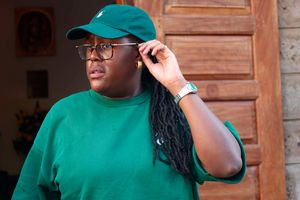Premium
I’m in UAE earning Sh120,000. How do I save to buy land and build rentals?

You have already set a long-term goal of buying land and building a house, but you should also focus on attaining financial freedom which means you will be in control of your finances and your life preferences.
My name is Alicia. I just started working in the UAE after leaving Kenya for greener pastures. I am currently earning Sh120,000 (3000 dirhams), house rent is Sh20,000 (500 dirham), expenses Sh20,000 (500 dirhams), sending money back home, Sh16,000 (400dirhams). I want to save enough to buy myself land and build a house after the end of my two-year contract. Help me to invest my money and budget for it.
Dominic Karanja, financial planning and investments consultant, says:
You need a personal financial plan which should state the financial goals you want to achieve, with clear timelines and a strategy on how you will achieve the goals. Achieving financial goals requires planning, discipline, and dedication. The crucial components of your financial plan should include your income, day to day expenses, debt repayments, protection, savings, and investment.
You have already set a long-term goal of buying land and building a house, but you should also focus on attaining financial freedom which means you will be in control of your finances and your life preferences. Since you are working in a foreign country you need to be mindful of foreign exchange risk and money remittance fees.
Of late, Kenya shilling has lost value against other currencies making somebody earning in foreign currency to have more income when converted into Kenya shilling and the inverse is true should the Kenya shillings gain against other currencies. Always use financial institutions that offer good exchange rate and reasonable money transfer charges.
I would recommend that you set up an emergency fund that can take care of at least 6 months of your expenses in case of future mishaps like job loss or unexpected emergencies. Based on your current expenses, you need to create an emergency fund of at least Sh330,000. You spend13% of your income on black tax and though there is no set amount of black tax, I would recommend that you dedicate not more than 10% of your income towards that expense and maintain that discipline so that you can save at least Sh4,000 per month from the amount you send home.
It’s possible for you to dedicate Sh70,000 which is 58% of your monthly income towards savings and investment. Savings is the amount of money you keep aside while investment is the process of converting the accumulated savings into productive use.
It’s important to consider your risk profile and the timeframe of your investment. I would encourage you to start saving with the Sacco and always remember to capitalise on your Sacco dividends to deposits to help increase your borrowing power and earning of high dividends in the subsequent years. There are several Saccos offering savings, loans and investment products that target people in the diaspora, however, you need to consider joining a Sacco where you can get friends who can act as your guarantor in case you need to get a Sacco loan.
If you consistently save Sh40,000 which is a third of your monthly income with a Sacco you will have saved almost Sh1,050,000 by end of second year assuming that you will be ploughing back your dividend earnings to the savings. Saccos are a good source of development loans because they can advance you a loan amount that is three times your savings, however your income sources need to be enough to afford the monthly loan instalments.
It is recommended that you commit at least a third of your net income towards loan repayments which means that though your Sacco savings by the end of year two can allow you borrow a loan of about Sh. 3 million, at your current pay you can afford to access a Sacco development loan of Sh2,000,000 in future at an annual interest rate of 12% on reducing balance payable in 6 years where you will pay a monthly instalment of about Sh40,000 which is a third of your pay. Keep on increasing your Sacco savings as your income increases so that you can borrow more from the Sacco in future to finance your investment projects.
You need to consider investing the extra funds in a Money Market Fund (MMF). I recommend that you consult a financial advisor on the best MMF you can invest your money in. The MMF is a low-risk investment with guaranteed returns, your capital is preserved, you can grow your portfolio through regular savings and the funds are easily accessible in case you need to withdraw.
I would encourage you to invest at least 70% of your emergency fund in an MMF. If you save Sh30,000 per month with MMF at the rate of 9% per annum having factored in tax and management fees you will have at least Sh775,000 by the end of second year. You can use the money you will have saved in an MMF account to buy land and then utilize the Sacco loan to develop the land. Consider renting out the house for the time you are working abroad so that it can generate some rent income which you can direct towards loan repayments.
Treasury bills and treasury bonds are other investment options you can consider in the short and medium term. You need a minimum of Sh100,000 and Sh50,000 to invest in treasury bills and treasury bonds respectively, however for the infrastructure bond you will need a minimum of Sh100,000. Government securities returns are on the rise with the latest treasury Bills average interest rate above 13% and the latest two-year Treasury bond paying coupon rate of 16.9%.
If you have any money problems, send us an email at [email protected] and leave your number for contact. Money questions will be answered on this column.





